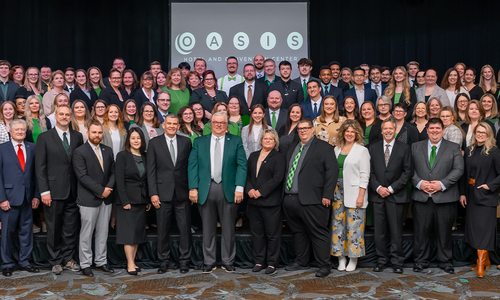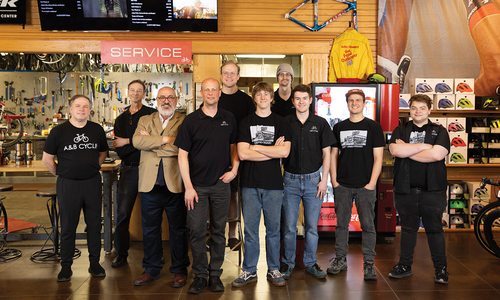
Small to Mid-Sized
Codefi’s James Stapleton Turns to the Tech Industry
In his third act, Codefi’s James Stapleton turns a much-needed spotlight on the tech industry—and the jobs new companies provide.
By Jennifer Johnmeyer
Jul 2024

James Stapleton is no stranger to business ownership. His first foray as an entrepreneur began at 18 when he launched his first company, which led him through several creative and tech businesses before transitioning into his second chapter, a career in higher education at Southeast Missouri State University in Cape Girardeau. In that time, Stapleton started an entrepreneurship center at the university and worked closely with regional, state and federal economic development and government organizations before receiving an email 15 years ago that led to his next “aha” moment.
The email, from the federal administrator of the Delta Regional Authority, led to a meeting in which he posed several questions. The first two (Where do jobs come from? What kinds of companies might create high quality occupations?) led Stapleton to research, beginning with the newly released Business Dynamic Statistics that were provided by the United States Census Bureau.
Stapleton learned that, beginning in the late 1970s, young firms across the country created nearly all of the net new jobs. He also found similar results in the lower Mississippi Delta region. According to UMKC’s Show-Me-Jobs report, in the last five years in Missouri, 82% of all new jobs created were by new companies.
“Missouri is doing really well as it relates to the growth of our technical economy. Missouri’s technology industry is close to being the same size in terms of GDP production as manufacturing, and manufacturing is the kind of industry we want to model other industries after,” Stapleton says, referring to a Missouri Chamber of Commerce report, titled Technology 2030.
That report also highlighted Greene County specifically. “We’re one of the few Missouri counties where more than 5% of all jobs are tech industry jobs,” he says. “The bulk of the jobs in Greene County are in IT occupations.” He put the answers to the first two questions together and realized there was a need for more companies employing technology occupations.
“As we create and eliminate jobs, we probably won’t see new jobs from existing employers. It was then I had the aha moment that I needed to fill the gap that existed. So we started Codefi.”
Codefi launched in November 2014 in Cape Girardeau. It was the area’s first co-working space and technology incubator, with a larger vision for economic growth: to be a catalyst to increase the formation and growth of technology-based companies in the region.
Codefi’s focus is on supporting startups because they are net-job creators. Stapleton explained that public business dynamics data going back to the late 1970s indicates that firms less than five years old are responsible for nearly all net new jobs created each year. “Most years, in most U.S. regions, established firms five years or older destroy more jobs than they create,” he says. “Thus, if it wasn’t for young firms, our economy wouldn’t create net new jobs.”
With an idea of the answers to the first two questions posed in that fortuitous meeting, Stapleton is focused on the third: What would it take for Springfield to become the startup capital of the Midwest? Stapleton believes the Springfield region is well-positioned for considerable growth in the tech industry in the future. Codefi and efactory recently took a big step, co-creating Innovate SOMO Funds, a first-of-its-kind regional approach combining a non-profit fund created by charitable donations and a for-profit fund backed by limited partners, co-investing to make equity and revenue-based investments in startups across southern Missouri.
This model serves to maximize impact in the earliest, riskiest stages of tech startup creation, when funding is most scarce and traditional investment models often fall short. Industry focuses are on the fields of information technology, tech manufacturing, financial services, health care and agriculture, driving job creation where it is most needed.
The total fund size is $2 million, from combined nonprofit and for-profit funds, with a geographic focus of the 47 counties served by the Southern Missouri Innovation Network.
Stapleton’s initial “aha” moment—and third act—is only getting started. “What if we decided to start 50 new high-tech, high-growth companies in the next several years? Fifty founders and co-founders into our ecosystem. Getting more people starting and learning.”
Nailed It, Failed It with James Stapleton
“I nailed it when I married my wife. It’s not easy being a partner with an entrepreneur. Despite my non-linear career, and many ups and downs, mostly ups, Stacy has been the world’s best friend.” #NailedIt
“I failed it by waiting too long to engage in more public discussions and work to fill the skills and opportunity gaps that have prevented more entrepreneurs and workers outside major mentors from thriving in the tech economy.” #FailedIt












